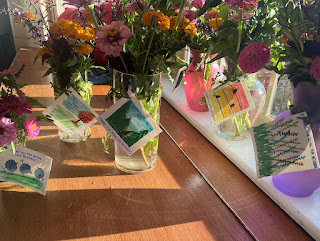Loneliness Is No Longer a Footnote—It’s a Public-Health Headline
The World Health Organization’s new From Loneliness to Social Connection report lands with a thud: social isolation is shaving years off lives and dollars off economies, yet we still treat it like an awkward dinner-party topic. The Commission’s plain-language summary reframes loneliness as a social-health emergency—on par with physical and mental well-being—and challenges every neighborhood to step up. Here are the big take-aways and what they mean for the folks on your block.
1. The Scale Is Global—and
Local
Between 2014 and 2023, one
in six people on the planet reported feeling lonely. That unmet need for
connection contributes to about 871,000 premature deaths each year—a
mortality burden comparable to smoking or obesity . Young people (ages 13-29)
and residents of low-income countries report the highest rates, but no age,
gender, or zip code is immune . Even prosperous suburbs can host hidden pockets
of social drought.
2. Connection Has Three
Dimensions
The Commission clarifies that
social connection isn’t just “how many friends you have.” It has structure
(number and frequency of contacts), function (the practical or emotional
support exchanged), and—most important—quality (whether those
relationships feel warm or stressful) . You can be at a packed barbecue and
still feel painfully alone if the quality piece is missing.
3. Why We Get Disconnected
Drivers range from personal
health struggles to neighborhood design. Chronic illness, low income, shyness,
unsafe streets, and life upheavals like retirement or divorce can all fray our
social fabric . Digital tools are a double-edged sword—lifelines for some,
time-sucking isolation machines for others.
4. The Costs: From Broken
Hearts to Broken Economies
Loneliness doubles the risk
of depression and is linked to heart disease, stroke, dementia, and diabetes.
Communities with weak social ties are slower to recover from disasters, and
nations rack up billions in lost productivity and healthcare costs .
Translation: disconnection isn’t just sad; it’s expensive.
5. Five Fronts for Action
The Commission calls for
synchronized moves in five arenas—policy, research, interventions,
measurement, and engagement—each with three concrete recommendations, from
national connection policies to a global “social connection index” . Eight
countries, including the U.S., already have official loneliness strategies, but
every neighborhood can pilot its own micro-policy.
6. Community
Infrastructure Matters
One of the most potent levers
is “social infrastructure”—parks, libraries, cafés, bus routes, walking
trails—places where chance encounters bloom into relationships. Upgrading these
spaces to be safe, accessible, and inclusive is a proven antidote to isolation
. A bench under a shade tree may be as powerful as a new clinic.
7. Programs That Work
Effective interventions
cluster in three baskets:
- Skills
training: teaching conversation starters, conflict resolution,
even smartphone basics for digital newbies .
- Social
engagement opportunities: volunteer befriending teams,
peer-support circles, intergenerational choirs, pet-visiting schemes. They
don’t lecture; they create shared experiences.
- Therapy
and psychological support: CBT, mindfulness, or group
counseling to shift the mindsets that keep people stuck in loneliness
loops .
Combine these with “social prescribing,” where a doctor writes “join the community garden” instead of another pill, and you’ve got a neighborhood pharmacy of connection.
Lessons for Every Front
Porch
- Don’t
confuse crowd size with connection. Check in on the neighbor whose
driveway is always full—quality beats quantity.
- Moments
of transition are danger zones. New parents, recent retirees,
or families who just moved in are at higher risk; a simple “Welcome to the
block” basket can interrupt the spiral.
- Space
equals invitation. A sidewalk picnic table or free-little-library can
turn passer-bys into pals.
- Youth
need real-world anchors. Teens report the highest
loneliness; coach a pickup basketball game or host a homework club to give
them off-screen connection.
- Measure
what you treasure. Block captains can run an annual “neighbor survey” to
spot who’s slipping through the cracks—mirroring the report’s call for
better data.
The Bottom Line
The WHO report makes it
official: loneliness is lethal, but it’s also fixable. National policies
and research funds matter, yet the first line of defense is still your own
front step. Wave at the kid skateboarding past, invite the new couple over for
lemonade, or resurrect that community potluck idea you’ve shelved since 2019.
Every handshake, dog-walk chat, or shared zucchini loaf is a micro-intervention
in the world’s newest public-health battle.
So the next time someone asks
what you’re doing about the loneliness epidemic, you can smile and say, “I set
out two extra lawn chairs.” Sometimes, saving the world really does start in
the yard.
Access the WHO report online here.
Written by David L. Burton
MORE INFORMATION
Take the Engaged Neighbor pledge and become part of a movement! The pledge outlines five categories and 20 principles to guide you toward becoming an engaged neighbor. Sign the pledge at https://nomoregoodneighbors.com. Individuals who take the pledge do get special invitations to future events online and in person. Contact the blog author, David L. Burton via emal at dburton541@yahoo.com.





Comments
Post a Comment